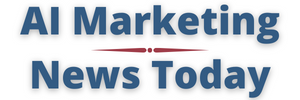A newly released study warns that the future of artificial intelligence-driven innovation hinges on a delicate policy balance: regulating AI to protect society while maintaining the economic dynamism that fuels capitalist growth. The paper, titled “AI Regulation and Capitalist Growth: Balancing Innovation, Ethics, and Global Governance,” submitted on arXiv presents a timely examination of whether regulatory guardrails enhance or inhibit economic expansion in the era of AI.
Drawing from historical parallels, legal precedent, economic projections, and current policy models, the study argues that a principles-based, risk-sensitive approach to AI governance can foster long-term innovation and public trust. However, it cautions that excessive or poorly designed regulation may entrench monopolies, stifle startups, and erode productivity gains, while weak oversight risks triggering societal harm, public backlash, and legal uncertainty.
Can AI be regulated without stifling innovation in capitalist economies?
The study directly tackles the central economic tension facing governments and industries alike: whether regulating artificial intelligence will catalyze or constrain technological progress. Economic forecasts cited in the research are optimistic. Estimates from Goldman Sachs and McKinsey project that AI could boost global GDP by $7 to $26 trillion by 2030, primarily through productivity gains and automation. But those figures, the authors caution, mask deeper complexity.
Evidence from MIT’s Institute for Data, Systems, and Society, for instance, suggests that AI’s net contribution to U.S. productivity over the next decade could be as low as 0.5–1% of GDP. The discrepancy arises because many tasks remain resistant to automation, and even where AI is adopted, benefits are often concentrated in high-skill, high-income sectors. Without strategic policy intervention, AI risks repeating the historical pattern of previous technological shifts, where productivity gains failed to yield widespread wage growth due to weakened labor bargaining power and market consolidation.
The authors argue that regulation does not have to conflict with capitalist ideals. Instead, they propose a framework in which outcome-based and risk-tiered regulation actively supports innovation. This includes regulatory sandboxes that allow startups to test technologies in a controlled environment, proportional compliance burdens that do not overwhelm small firms, and economic incentives for companies that prioritize transparency and ethical design. By defining boundaries without restricting experimentation, such approaches can mitigate harm while enabling dynamic growth.
How do legal and constitutional constraints shape the future of AI governance?
Beyond economics, the study explores how constitutional principles, especially in the U.S., will shape the contours of AI regulation. Key areas of concern include free speech under the First Amendment and privacy under the Fourth Amendment. As generative AI models begin producing content at scale, from political ads to deepfake videos, efforts to restrict or label such outputs will face legal tests. The authors note that courts may extend First Amendment protections to AI-generated outputs, not because AI has rights, but to preserve the rights of users and developers. This means blanket bans on AI content may be unconstitutional unless tailored to address specific harms such as fraud or defamation.
Similarly, the use of AI in surveillance and predictive policing raises red flags under the Fourth Amendment, which protects against unreasonable searches and seizures. Algorithms that direct law enforcement without individualized suspicion could undermine longstanding legal standards. The authors highlight that constitutional challenges are not insurmountable but require regulators to thread a legal needle, ensuring accountability and harm reduction without encroaching on civil liberties.
From a growth perspective, the paper emphasizes that legal clarity is not an obstacle but a necessary enabler. A stable rule-of-law environment gives innovators and investors confidence. Ambiguity or overreach could fuel costly litigation, delay deployments, and erode public trust. Thus, the authors advocate for regulation that explicitly aligns with constitutional boundaries while providing safeguards against abuse.
What historical lessons guide the future of AI regulation?
Looking backward to look forward, the study draws on regulatory precedents from prior technological revolutions, including the internet, biotechnology, and aviation. It finds that early-stage “light-touch” regulation has often played a key role in unlocking innovation. For instance, the internet’s explosive growth was supported by permissive frameworks like Section 230, while biotechnology’s emergence was governed initially by voluntary safety protocols developed by scientists themselves before transitioning into formal regulation.
In each case, successful outcomes were driven by industry engagement, international cooperation, and regulatory models that evolved with the technology. The authors caution against repeating past missteps where hasty or heavy-handed regulation choked innovation or led to protectionist fragmentation across jurisdictions.
For AI, the paper calls for a hybrid governance model that integrates voluntary industry standards, such as ethical AI review boards and algorithmic transparency audits, with formal oversight that scales with risk. Notably, the authors endorse an international AI governance body, possibly under the auspices of the UN or OECD, to establish shared definitions and cross-border standards. This would help prevent regulatory arbitrage and foster consistency in how AI systems are evaluated and deployed across global markets.
The framework also outlines a four-tier risk classification for AI applications, ranging from low-risk systems (e.g., grammar checkers) to high-risk systems (e.g., medical diagnostics, autonomous vehicles) and outright prohibited uses (e.g., social scoring or autonomous weapons). Each level carries proportionate compliance requirements, ensuring that governance is neither too lax for dangerous applications nor too burdensome for benign innovations.


